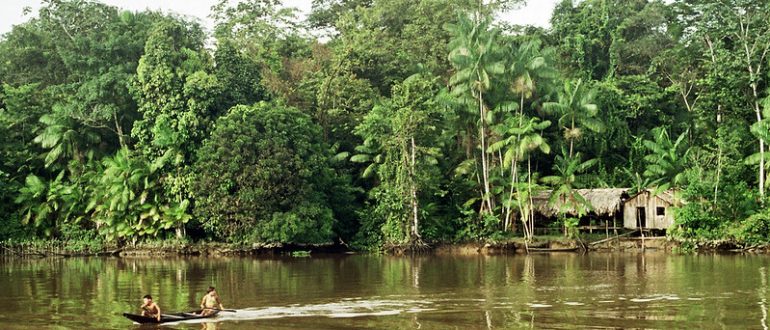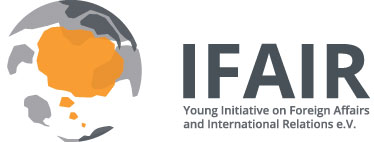
The Amazon Fund: Combating Deforestation for Climate Change Mitigation

The Amazon rainforest is a major carbon extractor whose conservation represents a worldwide challenge for climate change mitigation. The Amazon Fund was implemented by Brazil in 2008 to tackle the global challenge of preserving the Amazon rainforest through the introduction of an innovative, multi-stakeholder governance mechanism fostered by international cooperation. Ten years later, the time has come to assess the merits and shortcomings of this initiative.
The Amazon Fund is an innovative framework for combating deforestation and mitigating climate change; however, concerns surrounding its modus operandi and doubts about its effectiveness have recently begun to emerge. This article will introduce the Fund, its objectives, and its innovative multi-stakeholder governance structure. Subsequently, an analysis will shed light on its current challenges, such as the difficulty to assess the long-term impact of projects, the limited number of donors, and the gap between its potential and its outcomes. The conclusion argues that the establishment of indicators to quantify and learn from successful projects could endow the Fund with potential for interaction between ventures, allowing expansion and replication. If implemented, this solution could help to address the issues affecting the Fund’s capacity to perform.
The Amazon Fund: a pioneering initiative for climate change mitigation
Brazil is one of the ten largest greenhouse gas emitters in the world; it is the largest in Latin America, with 50% of its emissions caused by deforestation.[1] To address this issue, the Brazilian federal government within the framework of its National Plan on Climate Change[2], created the Amazon Fund (AF) in 2008, which has accumulated US $1.21 billion in donations to date.[3] It has gathered international grants based on voluntary contributions from governments, companies, NGOs and individuals to prevent, monitor and combat deforestation, as well as promote conservation and sustainable use of the Amazon under REDD+ (Reducing Emissions from Deforestation and Forest Degradation), an international framework on sustainable forest management and forest carbon stocks enhancement.
The Brazilian National Development Bank (BNDES), one of the largest development banks in the world, is responsible for managing the AF due to its extensive experience in investing in socially sustainable projects with a special attention to financial and environmental aspects. Development Banks have a comparative advantage in accessing small and medium enterprises (SMEs) and small rural producers – the main target group for AF’s operations – in comparison to private financiers.[4] As the private banks’ primary concern is the financial aspect of an operation, they are discouraged from targeting ‘riskier’ groups as credit risk deteriorates. In contrast, development banks can internalise positive externalities and are encouraged to finance projects, which potentially yield high social returns.[5]At the same time, they can provide technical assistance to these groups, which is extremely valuable for implementing the AF’s spearhead: Payment for Ecosystem Services (PES).
In contrast to the ‘Polluter Pays Principle,’ PES proposes a ‘Beneficiary Pays Principle.’ It enables emission reduction and poverty alleviation through financial compensation for local communities and individuals, whose use of land and productive activities positively influence ecosystem services.[6] As the beneficiary, society compensates these groups for preserving biodiversity and avoiding the long-term costs associated with pollution. Due to their dependence on environmental services, the main impact of the sustainable use of the forest would be felt in the poorest regions; this speaks to the importance of AF investment in PES and its provision of alternatives for these populations.
Governing a Multi-stakeholder Project
BNDES is entrusted with the responsibility of managing the AF, as well as for raising and investing funds; hiring services; monitoring the projects supported by the fund; and rendering accounts. BNDES contributes to the fund by providing its project analysis expertise and by offering a robust infrastructure to channel the Fund’s resources to meritorious projects.[7] The Amazon Fund Steering Committee (COFA) is a tripartite guidance committee composed of federal and state governments representatives as well as civil society representatives. The committee is charged with the responsibility of setting guidelines and criteria for the investment of funds, following up on projects and approving the AF’s yearly activity reports. The Technical Committee (CTFA) is composed of reputable scientists who are appointed by the Ministry of the Environment after consultation with the Brazilian Forum on Climate Change. They play an essential role in certifying that the objectives of the fund are being met by validating the annual calculation of emission reduction.
Figure 1. Governance of the Amazon Fund: a tripartite guidance committee
Source: Banco Nacional de Desenvolvimento Econômico e Social. 2016 Amazon Fund Activity Report 2016. Brasília [8]
Ten Years Later: Perspectives and Challenges for the Amazon Fund’s Governance
The multi-stakeholder management system of the Amazon Fund is innovative as it brings together governmental authorities and members of civil society. It is inclusive because it represents various institutions, all of which are affected by the issues that the Fund’s activities target.[9] Since Norway and the EU are the most preeminent underwriters of REDD+, the fund’s primary source of funding, the successful management of the AF can provide a benchmark for international cooperation models to combat climate change, especially in an EU-LAC context. As the fund manager, BNDES offers its financial expertise and infrastructure to finance projects, COFA provides a forum for defining goals and analysing the progress of different projects under the AF’s framework. Finally, the CTFA plays a legitimising role with its in-depth analyses to certify the Fund’s impact and fundraising potential.
The Fund raised US $1.21 billion in donations by December 2017. 93.23% of these funds were donated by the Norwegian government, 6.16% by the German government through the KfW Development Bank, and 0.61% by Petrobras.[10] The donations raised are sizeable but still very concentrated, primarily because the assessment of the portfolio’s efficiency and its impact on climate change mitigation are limited. Attracting new donors and partners can most likely only be done once the Fund establishes methodologically robust means to assess its long-term impact. For now, German and Norwegian governments are still committed to supporting the AF. They pledged to donate an additional US $133 million and US $600 million respectively until the end of 2020.[11][12] Still, finding new donors is important to mitigate the risk of one or another withdrawing from their commitments.[13]
A gap between fundraising potential and the action on the field
At the moment, funding is not the most pressing concern. The learning curve BNDES faced to establish a new department to manage the fund took its toll on the number of projects financed during the first couple of years, but as the capacity built gradually, the number of supported projects eventually grew. It currently takes a minimum of 210 days to appraise new proposals, which some researchers still consider to be far too long.[14]
Source: Amazon Fund 2013 and 2018 Portfolio Reports. Adapted by the authors with information retrieved on 18.04.2018
Source: Amazon Fund, 2013[15] and Amazon Fund 2018[16]. Adapted by the authors with information retrieved on 18.04.2018
The Fund has supported US $655 million worth of projects since 2009, whereas it accumulated US $1.21 billion in donations. This means that the AF has employed only 53% of its resources. There is a significant gap between the Amazon Fund’s fundraising capacity and its ability to utilize their funds. This happens in part because AF’s disbursements are subject to BNDES policies, which, besides assuring well-established fiduciary standards, may cause difficulties for smaller organisations to access money. The bank must scrutinise projects following strict evaluative criteria, frequently demanding additional documentation to ensure the project’s capacity to meet its objectives. This causes many tenderers to abandon their applications, while several other projects are rejected due to their lack of foreseeable implementation capacity, for not complying with the Fund’s guidelines and criteria, or for low technical quality or incomplete proposals, among others.[17] One approach to tackle this issue was launched in 2015 and involved thematic invitations offering less restrictive conditions, especially for small-range projects.[18] Applicants, international organisations, local governments, or small NGOs dispose of unequal capacity and resources and the level of their proposals reflect this difference. BNDES also invested time and effort into supporting applicants to develop their proposals to ensure higher technical quality, and consequently increased approval rates.
A cooperative solution for a local and global issue
Former UN Secretary-General Ban Ki-moon commented that “The partnership between Brazil and Norway through the Amazon Fund shows intensified support for one of the most impressive climate change mitigation actions of the past decades.”[19]
The Amazon Fund indeed provides an excellent example of an inclusive governance mechanism that aims to tackle a local problem causing global repercussions. Brazil created a tool for participatory decision-making under an internationally accepted framework and increased the fund’s potential to foster international cooperation; an essential step for addressing climate change-related issues. However, the project faces obstacles in unlocking its full potential. In practice, BNDES offers the necessary transparency and technical capacity to manage this fund. However, the impact of these projects is still hardly quantifiable. This creates difficulties to attract support from more donors and in providing a benchmark for other similar initiatives. Moreover, BNDES’ strict policies combined with lengthy evaluation processes seem to be unsuitable for many project applications by smaller applicants.
The Amazon Fund surely is a pioneering initiative, which demonstrates that there is a role for development banks to play in fostering the sustainable management of forests, via PES. It also has offered an opportunity for international cooperation between the European Economic Area (EEA) – represented by Germany and Norway – and Latin America. However, it would be important to implement measures to help to quantify and learn from the implemented projects. This could be achieved by working closely with local communities to provide feedback and data for impact indicators; by providing regular reports on impact and the Fund’s allocation at project and area level; and by using green bonds’ best practices for such reports. As small rural producers and SMEs play a fundamental role in PES schemes, BNDES needs to find more alternatives to build-up their capacity to access financing. Due to the diversity of AF’s project portfolio and given the BNDES team’s limited capacity, it seems that the fund falls short of identifying the potential for interaction between old and new projects.
Beyond anchoring Brazilian efforts for a sustainable forest management, this innovative solution became a model for other national climate change funds. It must now make use of its broad range of stakeholders and reinvent itself to face the issues affecting its capacity to perform and grow even further.
References
[1] World Bank. (2012) Total Greenhouse Gas Emission. https://data.worldbank.org/indicator/EN.ATM.GHGT.KT.CE?view=chart(accessed on 9 July 2018)
[2] Governo Federal do Brasil. (2008) National Plan On Climate Change. http://www.mma.gov.br/estruturas/208/_arquivos/national_plan_208.pdf (accessed on 18 Abril 2018).
[3] Governo Federal do Brasil. (2008) Decreto Executivo 6.527/2008. Brasília. http://legislacao.planalto.gov.br/legisla/legislacao.nsf/Viw_Identificacao/DEC%206.527-2008?OpenDocument (accessed on 18 April 2018).
[4] Bancoldex. (2017) The role of national development banks in fostering SME access to finance.http://www.unescap.org/sites/default/files/Session%205_Hernando%20Castro%20Restrepo.pdf (accessed on 20 April 2018)
[5] Torres, E. and Zeidan, R. (2006) The life cycle of national development banks: the experience of Brazil’s BNDES. The Quarterly Review of Economics and Finance, Volume (62): 97-104. https://doi.org/10.1016/j.qref.2016.07.006 (20 April 2018).
[6] Strassburg, B.B.N (2009) Sumaria avaliação económica dos impactos das mudanças climáticas sobre biomas brasileiros.
[7] Zadek, S. et al. (2009) Radical Simplicity in Designing National Climate Institutions: Lessons from the Amazon Fund. Accountability Climate Briefing Series. https://hiyamaya.files.wordpress.com/2009/12/radical-simplicity-in-designing-national-climate-institutions_lessons-from-the-amazon-fund.pdf (accessed on 18 April 2018)
[8] Banco Nacional de Desenvolvimento Econômico e Social. (2016) Amazon Fund Activity Report 2016. Brasília: p. 22. http://www.fundoamazonia.gov.br/export/sites/default/en/.galleries/documents/rafa/RAFA_2016_en.pdf (accessed on 18 April 2018)
[9] Marcovich, J. and Pinsky, V.C. (2014) Amazon Fund: Financing Deforestation Avoidance. Revista de Administração, Volume 49 (2): 280 – 290.
[10] Amazon Fund. (2018). Donations. http://www.amazonfund.gov.br/en/donations/ (accessed on 25 April 2018).
[11] Norway’s Ministry of Climate and Environment. (2017) Norway is committed to the partnership with Brazil on reducing deforestation.Norway. https://www.regjeringen.no/en/aktuelt/norway-brazil-cooperation/id2558980/ (accessed on 25 April 2018).
[12] BNDES. (2017) The Amazon Fund receives another R$ 271.2 million from Norway and Germany. Rio de Janeiro. https://www.bndes.gov.br/SiteBNDES/bndes/bndes_en/Institucional/Press/Noticias/2017/20171220_the_amazon_fund.htm (accessed on 25 April 2018).
[13] Carrington, D. (2017) Norway issues $1bn threat to Brazil over rising Amazon destruction, The Guardian, London.https://www.theguardian.com/environment/2017/jun/22/norway-issues-1bn-threat-brazil-rising-amazon-destruction (accessed on the 8 July 2018)
[14] Marcovich, J. and Pinsky, V.C. (2014) Amazon Fund: Financing Deforestation Avoidance. Revista de Administração, Volume 49 (2): p. 280 – 290.
[15] Amazon Fund. (2013) Portfolio Report. http://www.fundoamazonia.gov.br/export/sites/default/en/.galleries/documents/portfolio-report/2013_12_Amazon-Fund-Porfolio-Report.pdf (accessed on 18 April 2018).
[16] Amazon Fund. (2018) Portfolio Report. http://www.fundoamazonia.gov.br/export/sites/default/en/.galleries/documents/portfolio-report/2018_02_Amazon-Fund-Porfolio-Report.pdf (accessed on 18 April 2018).
[17] Forstater, M. et al. (2013) The Effectiveness of Climate Finance: A Review of the Amazon Fund. London: ODI Working Paper (372). https://www.odi.org/publications/7382-multilateral-climate-finance-effectiveness-amazon-fund-brazil-development-bank (accessed on 18 April 2018).
[18] KFW. (2016) Amazon Fund and Amazon Basin Ex-Post Evaluation Report. Germany. https://www.kfw-entwicklungsbank.de/PDF/Evaluierung/Ergebnisse-und-Publikationen/PDF-Dokumente-A-D_EN/Brasilien_Amazonienfonds_2016_E.pdf(accessed on 18 April 2018).
[19] Norway’s Ministry of Climate and Environment. (2017) Norway fulfils one billion dollar committment to Brazil, in recognition of reduced deforestation in the Amazon. Norway. https://www.regjeringen.no/en/aktuelt/norway-fulfils-commitment-to-brazil/id2439969/(accessed on 25 April 2018).

Juliette Mardon (France) and Raphael Zimmermann Robiatti (Brazil)
Juliette Mardon holds a Double Degree in History and Law and recently obtained a Master’s degree in Environmental Law from La Sorbonne University. She gained work experience as an intern for the United Nations Environment Programme at the regional office for Latin America and the Caribbean localised in Panama and during an internship in green and social bonds in an international agency providing environmental, social and governance research for investors, public and private organisations as well as NGOs. Juliette started a Master’s degree in Biodiversity, Territories and Environment in La Sorbonne in September 2018. Originally from Brazil, Raphael Zimmermann Robiatti is a Ph.D. fellow in the Faculty of Law, Social Sciences and Economics and the University of Erfurt, Germany. His research focuses on the political economy and governance of Development Financial Institutions in Latin America. He holds a Master of Public Policy (MPP) degree from the Willy Brandt School of Public Policy and a Bachelor’s degree in International Relations from the Pontifícia Universidade Católica de Säo Paulo (PUC-SP). Raphael currently works as a Project Coordinator at the University of Erfurt and has worked several years with international trade and process management in his home country.
